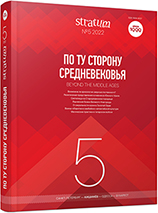Снаряжение всадника и верхового коня средневекового некрополя Цепле в северной Польше в свете археометаллургических исследований
Equestrian Equipment and Horse Harness from Ciepłe in Northern Poland in the Light of Archaeometallurgical Examinations
Author(s): Paweł Kucypera, Sławomir Wadyl, Paweł GanSubject(s): History, Archaeology, Military history, 6th to 12th Centuries
Published by: Издательский дом Stratum, Университет «Высшая антропологическая школа»
Keywords: Poland; Ciepłe; equestrian equipment; horse harness; archaeometallurgy;
Summary/Abstract: Archaeological investigations carried out at the early medieval cemetery in Ciepłe in northern Poland have yielded arms and equestrian equipment deposited in chamber graves belonging to the local elite. This study is based on elements of equestrian equipment and horse harness which were found in graves 35, 42 and 43. Based on the few metallographic analyses of European iron spurs, stirrups and bits dated between the 10th and 11th centuries, it may be suggested that the artifacts from Ciepłe were forged from bloomery low-carbon metal with low to medium phosphorus content. The objects and their parts (bits) are single- and multiple-piece forgings of varying degrees of complexity. The greatest skill was required in the manufacturing of stirrups, which in the case of the Ciepłe set are all composite products, each welded from two or three pieces of iron. Also included in this group are the bit sides from grave 43, both of which were made by joining together two chunks of metal. The remaining items, i. e. mouthpiece links, side plates, rings of horse bits, spurs, separators for stirrup leathers and bridle ferrules are hot formed objects, forged from single pieces of iron. All of the non-ferrous metal decorations of the equestrian equipment and horse harness were made in the so-called false damascening technique. The surface of the plating was also sometimes decorated with an additional negative drawing, sometimes lavish and rich in detail.
Journal: Stratum plus. Археология и культурная антропология
- Issue Year: 2022
- Issue No: 5
- Page Range: 395-408
- Page Count: 14
- Language: Russian

